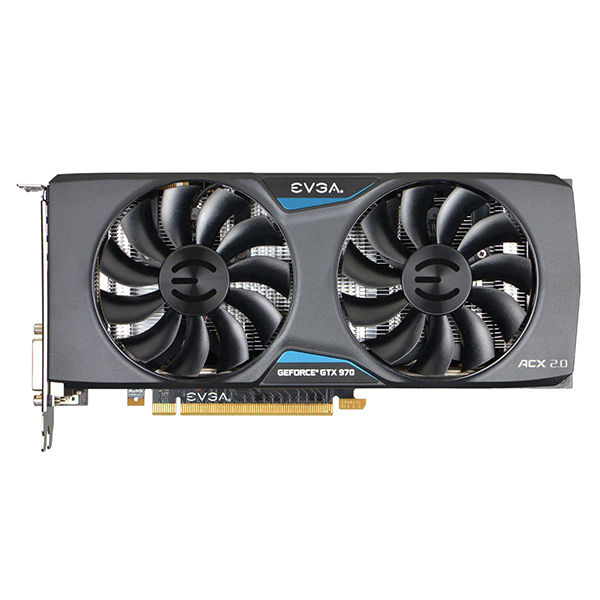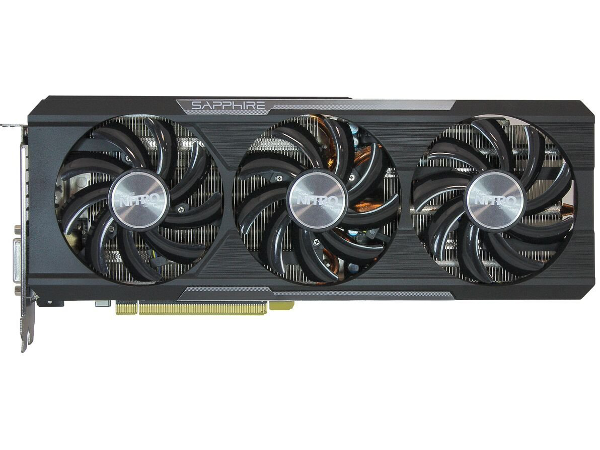Sapphire ITX Compact R9 380 Review
Why you can trust Tom's Hardware
How We Test
Test System Components
All of the tests run on this card were performed using our reference system. Each reviewer for Tom’s Hardware has the same setup, which consists of an Intel Core i7-5830K running at 4.2GHz, paired with 16GB of Crucial Ballistix Sport DDR4 and a pair of 500GB MX200 SSDs. The board we use is an MSI X99S Xpower AC, and the system is powered by a Platinum-rated 850W power supply from be quiet!. All of the components are installed into a Lian-Li PC-T80 test bench.
Software & Drivers
By the time you read this, Windows 10 and AMD’s Catalyst 15.7.1 driver will have been out for a little while. But at the time of testing, neither was available. All of the tests on Sapphire’s R9 380 ITX were performed running Windows 8.1 with Catalyst 15.7.
The closest comparison with AMD’s R9 380 GPU is Nvidia’s GeForce GTX 960. Our Zotac GeForce GTX 960 AMP! served as our example, and we used the GeForce 353.30 WHQL driver with it.
| DirectX | DirectX 11 |
|---|---|
| Graphics Driver | Sapphire Radeon R9 390: AMD Catalyst 15.7Sapphire ITX Compact R9 380: AMD Catalyst 15.7Zotac GeForce GTX 960 AMP!: Nvidia 353.30 WHQL driverEVGA GeForce GTX 970 SSC: Nvidia 353.30 WHQL driver |
Comparison Products
To compare this card to the next price tier, an EVGA GeForce GTX 970 SC and Sapphire R9 390 Nitro were used. Each card leveraged the same drivers our subject and its principal competition.
Gaming
Sapphire's ITX Compact R9 380 was run through the same suite of benchmarks as the Fury Tri-X and R9 390 Nitro reviews. Tests were run in Battlefield 4, Far Cry 4, Tomb Raider, Metro: Last Light, Middle Earth: Shadow of Mordor and Grand Theft Auto V at FHD and QHD resolutions.
| Battlefield 4 | Custom THG Benchmark, 100-sec Fraps, Ultra preset |
|---|---|
| Far Cry 4 | Version 1.9.0, Custom THG benchmark, 60-sec Fraps, Ultra preset |
| Grand Theft Auto V | Build 350, Online 1.26, In-game benchmark sequence #5, 110-sec Fraps, FXAA: On, MSAA: 2x, Texture Quality: Very High, Shader Quality: Very High, Shadow Quality: High, Reflection Quality: Very High, Water Quality: High, Particles Quality: Very High, Grass Quality: High, Soft Shadows: Softer, Post FX: Very High, Anisotropic Filtering: 16x |
| Metro Last Light | Built-in benchmark, 145-sec Fraps, Very High preset, 16x AF, Normal motion blur |
| Middle-earth: Shadow of Mordor | Built-in benchmark, 40-sec Fraps, Ultra preset |
| Tomb Raider | Version 1.01.748.0, Custom THG Benchmark, 40-sec Fraps, Ultimate preset |
Noise
My sound measurements were taken in the same manner as the GeForce GTX 960 reviews that I’ve written this year, along with the recent R9 390 Nitro review. The test isn’t as detailed or accurate as Igor's, but I also don't have the same kind of equipment. Instead, I use a hand-held dB meter. It's only capable of detecting sound as quiet as 35 dB. Anything lower than that and the meter reads 0 dB. In the graphs, if there is audible noise that is not registered, the graph will show 34 dB to represent that there is some sound, but an unknown level. Seeing 0 dB on the graph means the card made no discernible sound.
Power
To test power consumption using our reference platform, a bit of creative math is needed. Since Haswell-E processors don’t have integrated GPU cores, we can’t boot the system without a discrete board installed to get a baseline. We are able to estimate consumption based on the approximate power draw of the test bench, though. In our observations, we’ve found that the approximate power draw from everything other than the GPU is 120W. By deducting that from the recorded wattage reported on our in-line power meter, we can calculate the approximate draw of the GPU.
Get Tom's Hardware's best news and in-depth reviews, straight to your inbox.
Kevin Carbotte is a contributing writer for Tom's Hardware who primarily covers VR and AR hardware. He has been writing for us for more than four years.
-
Cryio " I was really expecting a loud card that ran hot. I was pleasantly surprised to find that just isn’t the case."Reply
The very definition of everyone's perception on the Internet of AMD's GPUs, unfortunately.
Don't know why the author expected this, when we found out the from the beggining that the 380 is both faster and more efficient than the 960. -
-Fran- Great article guys. Thanks for giving a little more light to this little card.Reply
I'm only missing one piece of information (unless I missed it somehow): the speed graph for the card. I have an intuition that the big dips you see in the FPS charts are attributed to the card throttling back due to increased GPU usage. I'd like to confirm that.
In any case, it seems like a pretty capable card.
Cheers! -
Haravikk Looks like a great option for my upcoming (much delayed) Mini-ITX build. Though I really wish on cards this size they'd ditch the other interfaces and just switch to mini-displayport; DVI connectors are a big space waster, and with the card's size I can't help but think that more room for the exhaust grille would be more valuable than an interface that I could easily just buy an adapter for.Reply
With the card supporting FreeSync it also makes a lot of sense to get a monitor that supports it anyway to get the full benefit from the card, in which case you can get one with mini display port of at least mini HDMI (not sure if FreeSync works on mini display port?)
But yeah, it's time to start getting rid of DVI connectors that take up half a slot. -
wtfxxxgp Reply" I was really expecting a loud card that ran hot. I was pleasantly surprised to find that just isn’t the case."
The very definition of everyone's perception on the Internet of AMD's GPUs, unfortunately.
Don't know why the author expected this, when we found out the from the beggining that the 380 is both faster and more efficient than the 960.
Your quote is misrepresentative of what the author said in every way. He referred directly to the small footprint as being the reason for his initial expectation.
That said, I don't know how anyone can say that it is more efficient than the 960. That's simply not true - it draws TWICE the power but is not even twice as fast, so efficiency being BETTER than 960? I want what you're smoking. Please. -
wtfxxxgp @ TOMS - when is the GPU chart being updated - last one was JUNE guys...Reply
Isn't it a monthly event? -
rgd1101 Reply16568340 said:please do review on Nano card, it has been released almost a week ago
Nano was a paper launch. -
kcarbotte Reply16568340 said:please do review on Nano card, it has been released almost a week ago
The Nano was only announced last week.
Some reviewers may have cards right now, but the card is not actually out until the 11th, and reviews won't be up anywhere until that date. -
dorsai I just can't see buying any 2gig card in today's gaming environment even at 1080...it's not a matter of IF but When you'll want to play a game and end up disappointed in the performance a 2gig card delivers. It's just makes some much more sense to spend another 25-50 bucks and get a card with 4gig...even an older 280x with 3gig makes a lot more sense to me.Reply

